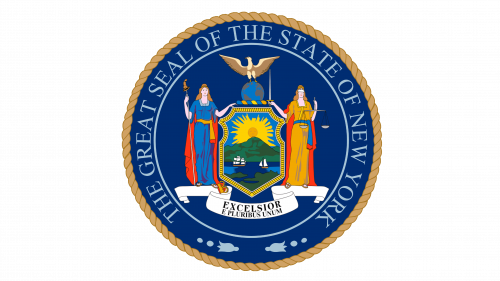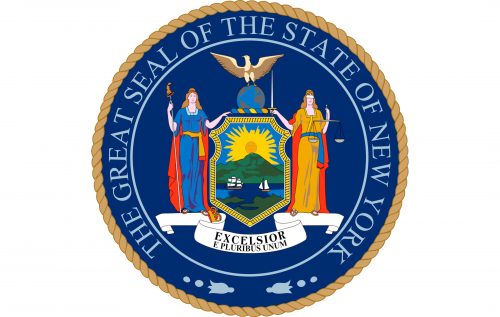The state seal of New York has undergone at least five modifications over its more than 240-year history.
Meaning and history
The original seal was introduced by a specially selected committee in the spring of 1777. The seal was developed with the aim of replacing the Crown Seal, which had been utilized at the time when the US was the Colony of Great Britain. In other words, the right to have an independent seal was one of the outcomes of the American Revolutionary War (1775–1783). The following year, the seal was officially adopted.
In 1798 and 1809, there were subtle alternations to the New York logo. Over time, the seal was reproduced multiple times on various surfaces and, as a result, noticeable deviations from the original emblem appeared. To get rid of them and to ensure the uniformity of the seal, another committee was created in 1880. The following year, the New York State laws established the fourth version of the design.
In the spring of 2020, the seal was slightly altered. In addition to the existing slogan, the lettering “E Pluribus Unum” meaning “Out of many, one” in Latin, was used.
Description of the Seal
In the center, you can see the state arms. In its middle, there is a shield housing a ship and a sloop on the Hudson River representing commerce. There is also the rising sun, a grassy shore, and a mountain in the background. To the left of the shield, there is the figure of Liberty. Below her foot, there is a crown, which symbolizes freedom from Great Britain. The hat is a Phrygian Cap, which is another symbol of freedom. To the right of the shield, there is the figure of Justice with her traditional scale and a sword.
There is also the globe with the American eagle on its top. The banner “Excelsior” below can be translated from Latin as “Ever Upward.”
Font
The state arms are encircled by the lettering “The Great Seal of the State of New York.” The designers opted for a classic serif typeface, which perfectly fits the historical and official style of the seal.
Colors
The New York logo is dominated by a deep, saturated shade of dark blue. There are also elements in several lighter blue hues, as well as in red, white, green, gold, and other colors. It is not unusual for state symbols to use such complex palettes, where each color has a deep meaning behind it.








